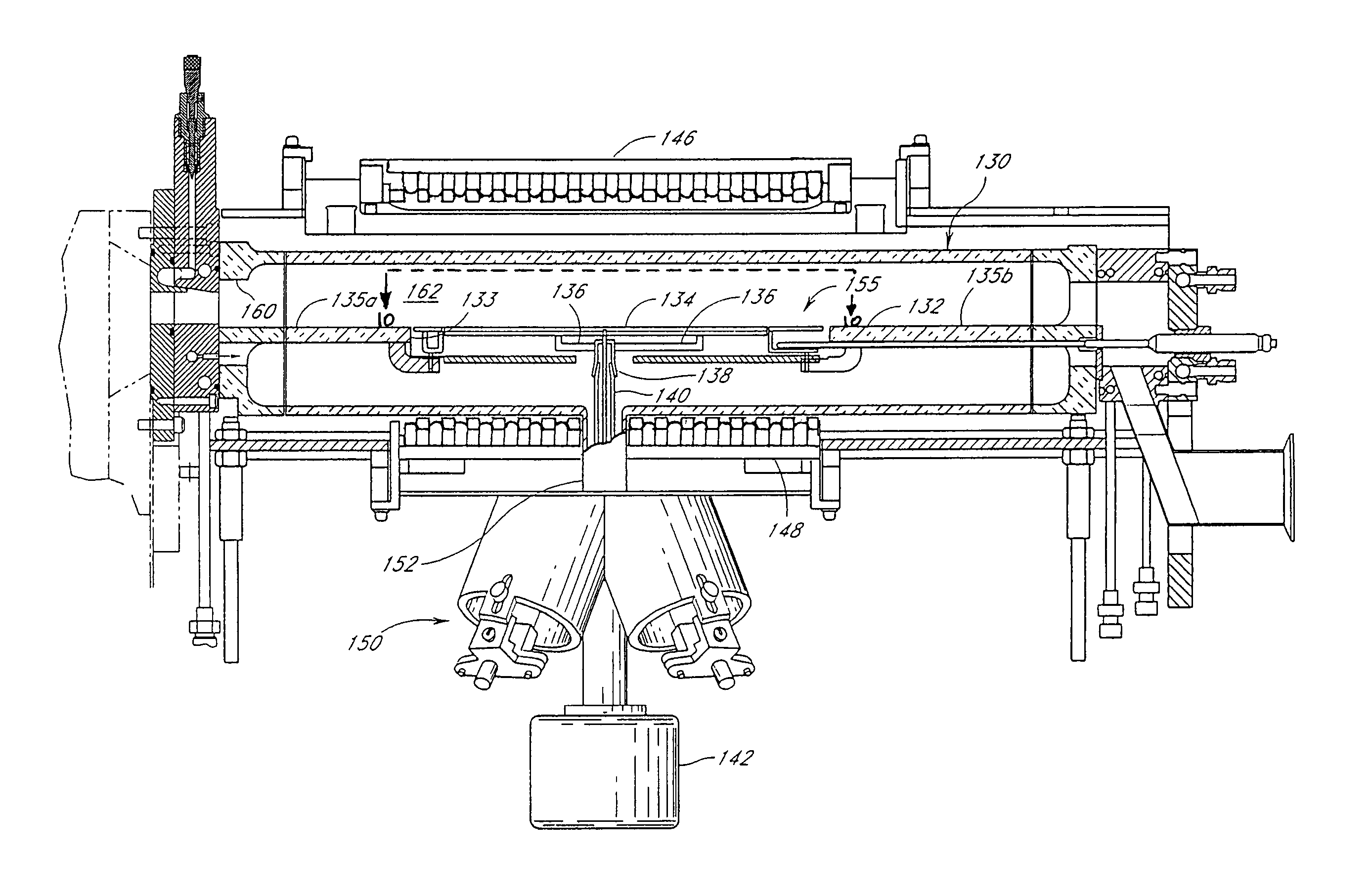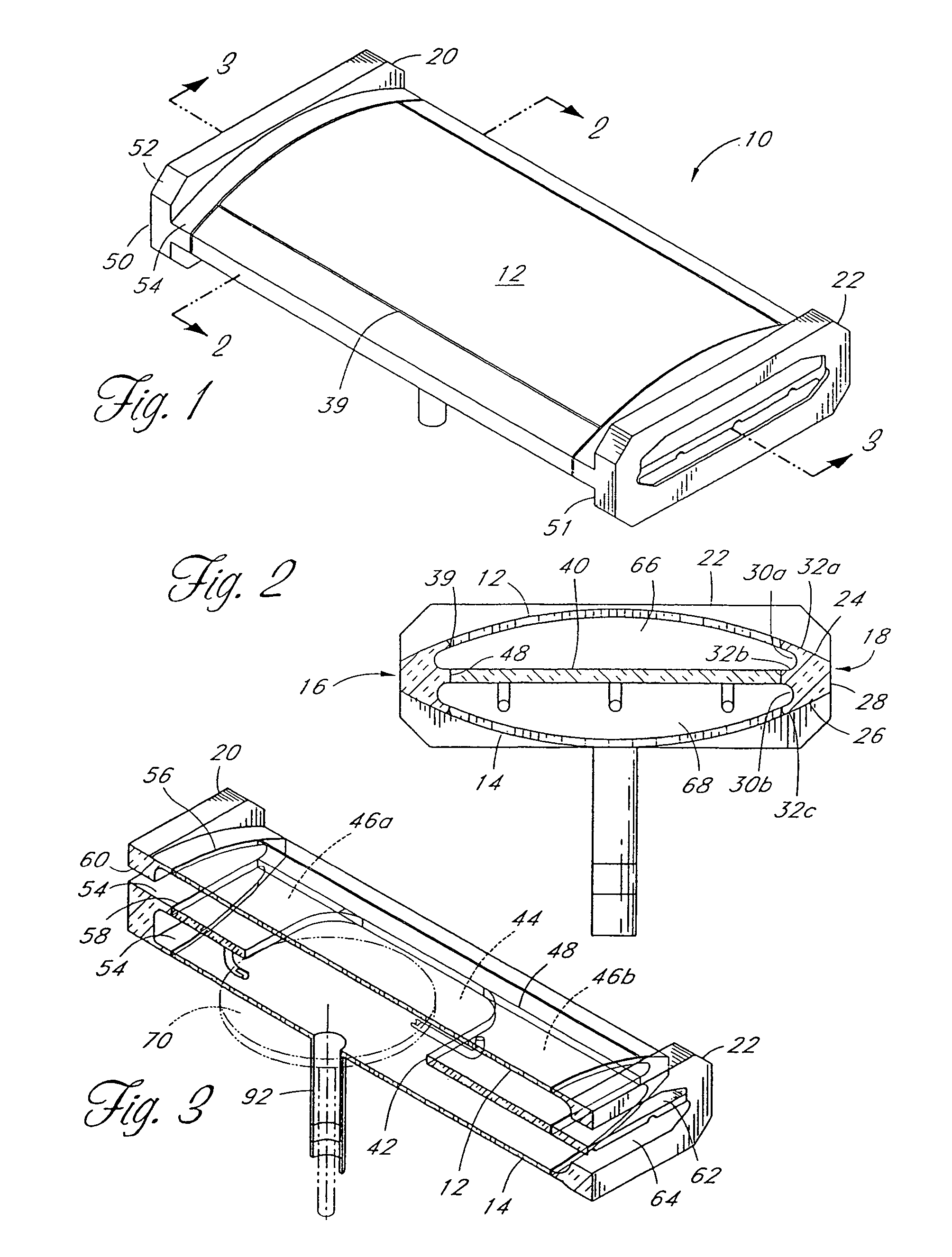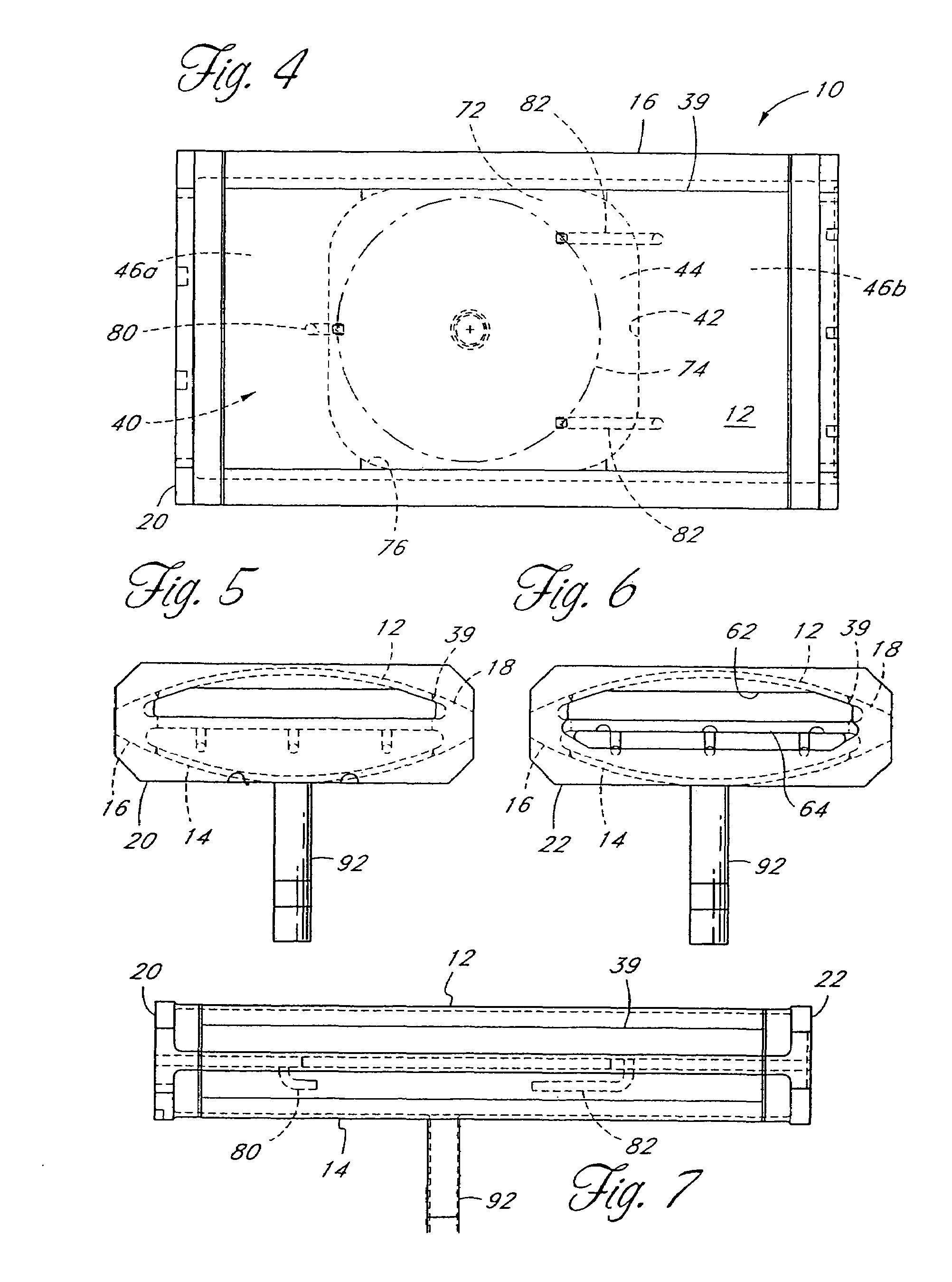LED heat lamp arrays for CVD heating
a heat lamp array and heat lamp technology, applied in the field of heat lamps, can solve the problems of crystallographic slip, non-uniform physical properties, and inability to uniformly heat the wafer, and achieve the effect of reducing the number of crystallographic slips
- Summary
- Abstract
- Description
- Claims
- Application Information
AI Technical Summary
Problems solved by technology
Method used
Image
Examples
Embodiment Construction
,” one will understand how the features of this invention provide several advantages over traditional CVD heating methods and systems.
[0011]One aspect is a chemical vapor deposition apparatus that comprises a high temperature processing chamber and a susceptor disposed within the chamber for supporting a wafer to be processed, the susceptor comprising a top surface, a bottom surface, and a perimeter. The apparatus further comprises a plurality of light emitting diodes (LEDs) located on a surface of the chamber, each configured to emit radiant energy towards the top surface, and a controller configured to adjust the radiant energy emitted by at least one of the plurality of LEDs relative to another one of the plurality of LEDs.
[0012]Another aspect is a method of processing a semiconductor in a chamber by applying heat from an array of LED lamps disposed adjacent to the chamber, each LED lamp being configured to emit directional radiant energy towards a substrate in the chamber. The m...
PUM
| Property | Measurement | Unit |
|---|---|---|
| height | aaaaa | aaaaa |
| height | aaaaa | aaaaa |
| radiant energy | aaaaa | aaaaa |
Abstract
Description
Claims
Application Information
 Login to View More
Login to View More - R&D
- Intellectual Property
- Life Sciences
- Materials
- Tech Scout
- Unparalleled Data Quality
- Higher Quality Content
- 60% Fewer Hallucinations
Browse by: Latest US Patents, China's latest patents, Technical Efficacy Thesaurus, Application Domain, Technology Topic, Popular Technical Reports.
© 2025 PatSnap. All rights reserved.Legal|Privacy policy|Modern Slavery Act Transparency Statement|Sitemap|About US| Contact US: help@patsnap.com



